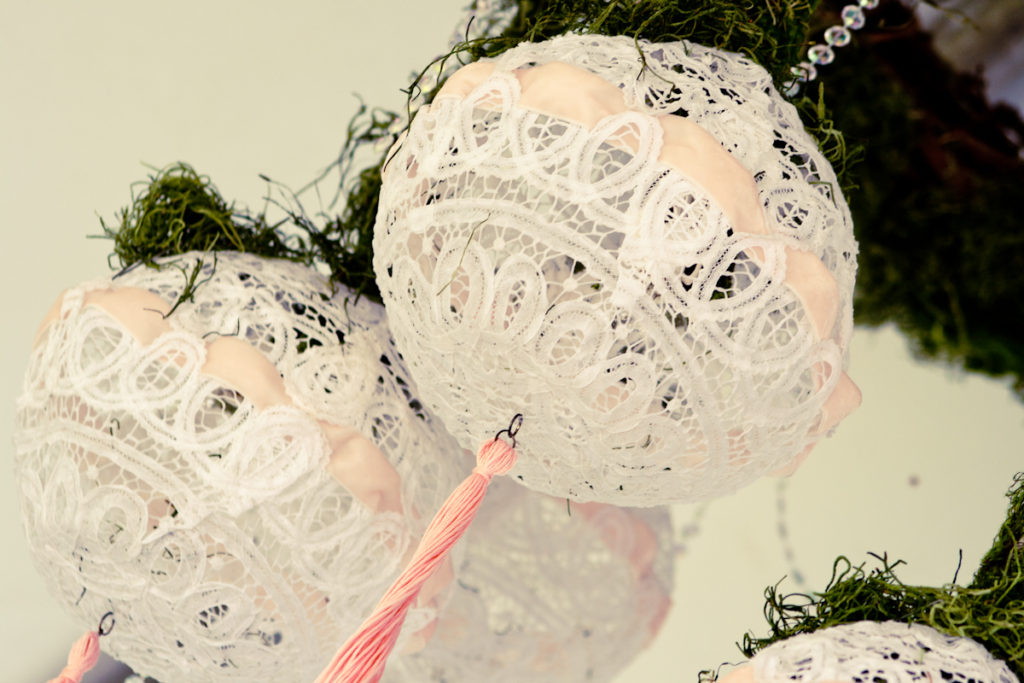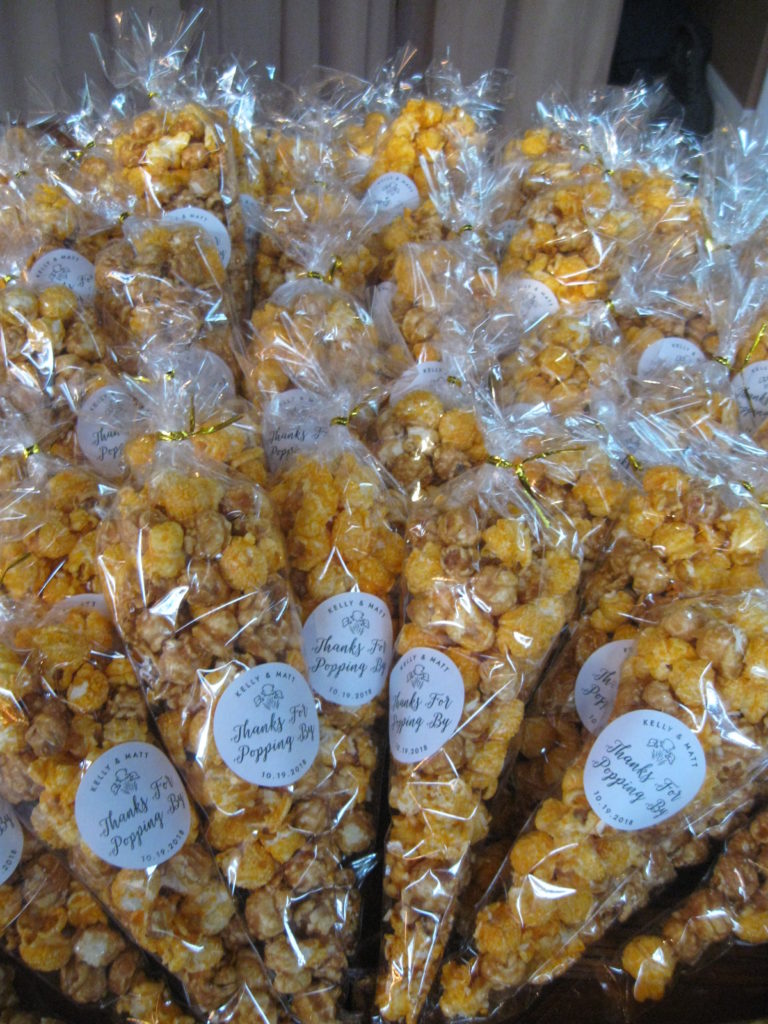Insects at Your Eco-Friendly Wedding

When you’re getting married in the Forest Preserve, you definitely have to think about insects. Photo by Allison Williams Photography.
Let’s say you’re planning your dream eco-friendly wedding, and you want to have it outdoors. At some point in the process you are going to realize that, if it’s summertime, you are going to be inviting all the local mosquitoes to the buffet–of your guests! No one wants to expose their guests to a zillion mosquito bites (much less ticks), but if you really want your event to be environmentally friendly, do you want to spray insecticide? It’s a dilemma. Fortunately, there are some things you can do that are less toxic and less destructive than calling the local bug spraying service or dousing the place in a toxic yard spray.
The first thing you can do is to warn your guests that there will likely be insects, and that if they want to avoid being bitten, they should remember to use their own repellent. The next thing–which is more hospitable–is to provide insect repellent and a place (away from the food, please!) where people can use it. If you want to provide non-toxic and effective repellents to your guests, try some of the products that contain oil of lemon eucalyptus (different from lemon eucalyptus oil) or picardin. (I learned a lot about these products from reading a Consumer Reports article on the subject. WebMD also has some useful information.)
Beyond personal repellents, there are other things you can do. If you have access to electricity, you can have large fans blowing in your guest area. Mosquitoes (but not ticks) are generally deterred by strong air currents. Most tent rental companies will also rent fans and the generators to run them. (Unfortunately, clean energy generators are not a big business for weddings and smaller events yet, but it may be possible if you have the time and money to devote to making it happen.)
There are also non-toxic products you can spread on the ground to repel mosquitoes, like these granules from Bonide. This product gets good online reviews, but I have not seen any scientific articles reviewing its effectiveness. My guess is that it probably works for a while, but may need to be re-applied periodically. It also is not marketed to repel ticks, so personal insect repellents are still probably your best bet if you know they are in the area.
As a last resort, you can use some of the insecticides (permethrin and pyrethrin products) that are approved for organic farm use and sold for general consumer use. They are still toxic but are less destructive to beneficial insects when they are sprayed after sunset than some other options. They are also human neurotoxins, so if you are concerned about that, they may not be an option.
While insects are a nuisance when you’re planning an outdoor event, there’s no reason why you have to kill them or poison the environment in order to have a comfortable time with your guests.
Re-run: DIY Weddings–Decor

If you have the time and the ability, you can go all-out and make a chandelier for your wedding tent, as this bride did.
I’m still thinking about DIY weddings, and about when DIY is a good idea and when it is not. One of the most successful kinds of do-it-yourself wedding planning is in the area of decor.
There are some kinds of decor that are better left to professionals. Things like flowers (see my thoughts on that here) and lighting fall in that category. If you want to hang large objects from a ceiling, I would definitely recommend hiring someone for that, too.
But there are lots and lots of things that are suitable for DIY: table runners, table numbers, card box, place cards, photo props, menus, programs, favors. Especially if you are planning unique decor, it may be easier and cheaper to make it yourself, rather than hunting down the perfect item at craft shops, second-hand stores, rental shops, and the internet.
Of course, it takes extra time–sometimes lots of extra time–and a little skill to do it all yourself. As always, plan carefully and leave yourself enough time. You don’t want to end up like a friend of mine who was frantically hand-writing place cards late on the night before her wedding. Plan to have it all done early and get help if you need it. And don’t feel like you need to do it all yourself. There’s no shame in hiring a professional to do things you can’t.
Eco-Friendly Wedding Favors
Here is one fairly easy way to make your wedding (or other party) more eco-friendly: Think about your wedding favors.
The greenest thing you could possibly do with favors would be to have no favors at all. After all, if there’s no favor, then there’s no waste. But that is not the way everyone wants to have things. So, if you are going to give favors, here are three things to consider: the type of favor, the place of manufacture, and the quantity to buy.
Probably the least sustainable type of wedding favor is the small object imprinted with the couple’s name and wedding date, especially if it is something plastic. Obviously, there are exceptions, but these types of things are the things that most people throw out after a while. It’s a lot of waste. A small object that is recyclable, compostable, or growable is a step in a cleaner direction. Something consumable or really useful might be even better. Food and beverages probably won’t go to waste–although you might want to give some thought to the type of containers they are in. Plastic cupcake boxes or nylon almond bags are likely to generate waste. Glass bottles are more likely to be recycled. Donations in lieu of favors sidestep the issues of waste entirely–and you could give money to an organization that works on issues of sustainability, if that is your wish. There is a whole range of possibilities here (and others I’m sure I’ve missed) that allow you to make your celebration more eco-friendly.
If you do decide to give your guests a small token, consider where and how it is made. Things that are cheaply made overseas have to be shipped here, which is a lot less sustainable than things made locally. You might also want to consider the ethical issues of cheaply made goods: They are generally made by people (sometimes children or prisoners) who are paid less than a fair wage. While it often costs more to buy from a local producer, at least you can verify the conditions of manufacture to be sure the creators are being paid fairly.
The other thing to consider is how many things to buy for your guests. In my experience, there are almost always favors left over at the end of the night (unless it’s a very popular food item). Often, guests will take one favor per household, rather than one per person. Some people just don’t want them. When you are deciding what kind of favor to get, take this fact into account. If you buy one per guest, you may well have to figure out what to do with the leftovers. You might want to purchase fewer than the number of guests so you don’t have to solve that puzzle. Or be sure to buy something that is easy to donate or resell.
While there are much bigger things you can do to green your wedding, this one is fairly easy and can be inexpensive. It’s something within the reach of many more people than, say, serving only organic local food. So, if you want to have a more sustainable celebration, you can start here. It’s always better to do something than to do nothing.


Recent Comments